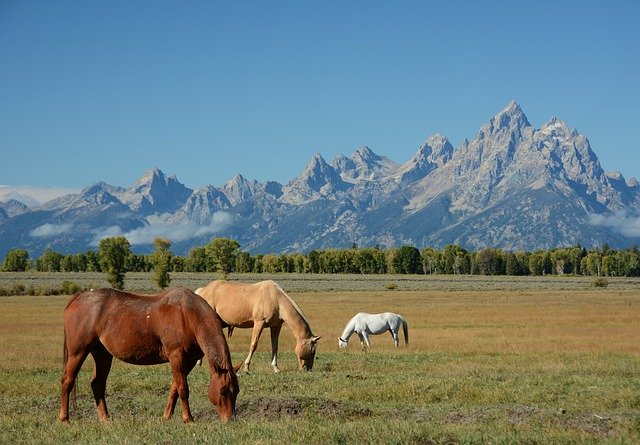There’s nothing more picturesque than a herd of horses grazing peacefully in the sunshine on lush, green pasture. Unfortunately, though, that beautiful grass could actually be harmful to many horses, especially those with Equine Metabolic Syndrome.

Equine Metabolic Syndrome (EMS) is a condition in horses characterized by insulin dysregulation. This means that the horse cannot handle high levels of sugar, which can result in high levels of inflammation, particularly in the feet where they may develop laminitis (acute or chronic foot inflammation of the feet).
Laminitis is a painful medical condition and must be addressed quickly with anti-inflammatories and removal of the causative agent (sugars), or the inflammation may cause the structures holding the coffin bone in place to separate, resulting in painful and potentially permanent rotation or dropping off the bone and chronic lameness.
Grass is high in sugar content, and thus potentially dangerous for horses with EMS. Grass tends to have the most sugars in spring and fall and tends to accumulate sugar throughout the day on sunny days. The grass will then convert sugar to fiber and other components overnight, resulting in lower sugar levels by morning. Thus the safest time to eat grass is typically in the early morning. However, if there has been excessive heat, drought, or frost/cold overnight, the conversion of sugars may be halted in these stressful states, and grass can be dangerous at all times of the day.
Thus it is important for owners to monitor weather conditions closely and choose the best times for their EMS horses to graze if they must. For many obese horses or those with a history of previous laminitis, the best option is actually a dry lot, where they can exercise with no grass intake. For leaner or better-controlled cases, a limited amount of grazing time with a muzzle is prudent. It is also important to monitor other food intake, including avoiding high starch/sugar grains or hays and providing a diet that includes necessary nutrients while still allowing weight loss in overweight horses.
Finally, lush spring grass also poses some threat even for metabolically normal horses. The sudden switch from a winter on hay to full-time grazing on lush grass can result in gastrointestinal upset or colic. It is best to introduce horses to grass gradually, starting with 15 minutes at a time and increasing slowly to the desired turnout time over several weeks.
While grass is appropriate for many horses, it is important to keep in mind the condition of your individual horse and how much they may be able to handle safely. For lean, metabolically normal horses, pasture grazing can be great for their mental health and calorie intake when introduced gradually. Conversely, EMS horses may be able to have only little to no grazing and other alternatives, such as dry lot turnout or a muzzle, should be considered.
Looking for more information? Try these articles:

